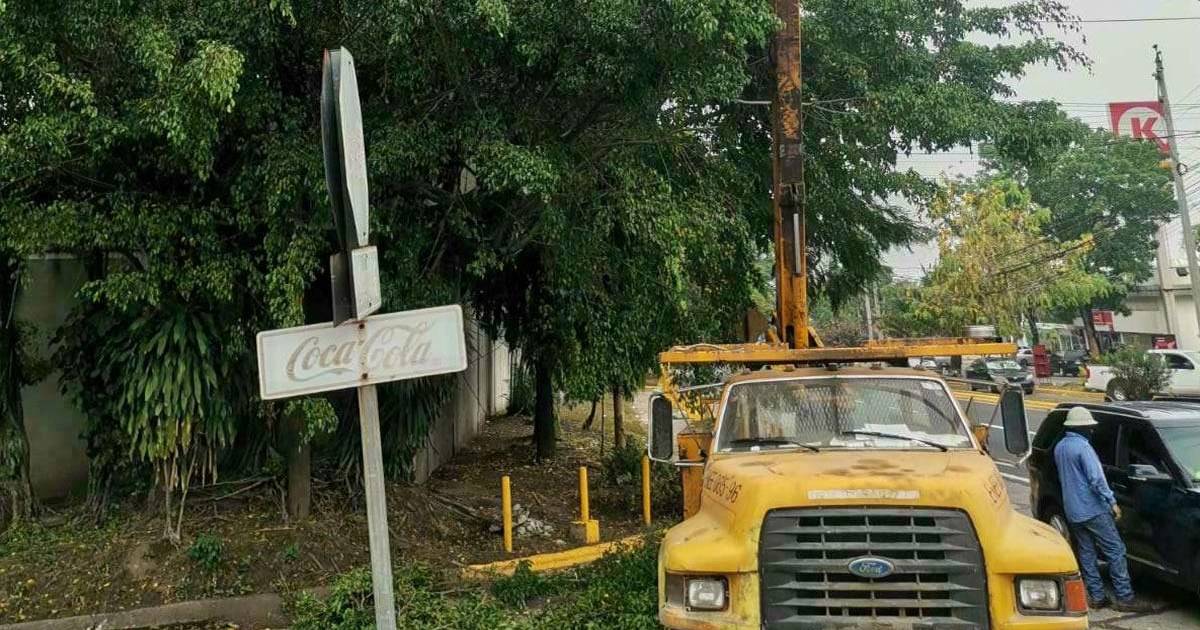Global Courant 2023-05-31 12:06:57
San Pedro Sula
The evidence is on the table and experts agree that the consortium of Honduras Energy Company (eeh) failed to meet the main objectives of its concession.
The most important, the reduction of energy losses in the national interconnected system proved to be a resounding failure, since not only was the incidence not reduced, but they even increased.
According to the most recent report of Manitoba Hydro International (MHI), the supervisory body for compliance with the concession contract, published by the Superintendency of Public Private Partnerships (SAPP) and dated February 24, 2023, the level of losses for the last month measured (January 2023) was 38.9%, for a global result, in the last 12 months, of 34.3%, that is, above the level calculated just before the concessionaire’s entry into action, towards the end of 2016, when the global level of losses was around 30%.
Investment
But the failure to achieve the main objective is accompanied by another key factor: the lack of investment in improving the distribution system.
While it is true, eeh alleges that the intervention (in September 2021 the enee took control of the concession contract) left the company tied to developing its investment plan, which had previously shown poor execution, judging by the reports issued by the supervising company.
energy keys
> 1. It is estimated that the energy deficit in the national interconnected system oscillates between 150 and 450 megawatts, to the point that there is no longer talk of scheduled blackouts, but directly of energy rationing because it cannot satisfy the country’s demand. > 2. Honduras has an installed capacity of about 2,800 megawatts, but it cannot take advantage of all that capacity due to various situations, which opens the door to reconfiguring the energy matrix, where thermal generation has been recovering lost ground. > 3. Aware of the situation, Enee has started an investment program in new substations and the repowering of existing ones. Although these works have already begun, it is a long-term solution, since they are not expected to be operational until 2025.
In this sense, for this analysis only the first five years of operation were taken into account, before the intervention, with data from the SAPP.
For example, in its first year of operation (2017) an investment of 73.5 million dollars was contemplated, but at the end the amount executed was only 29.6 million, according to MHI.
For the second year of operation, history repeated itself: of the 66 million dollars to be executed in 2018, the figure barely reached 42.4 million dollars.
“ We understand the terrible situation of little investment, almost zero, in the distribution network. “
Erick Tejada, Minister of Energy
In 2019, the performance was worse, since an investment of 70 million dollars had been traced, but only 31.4 million dollars were executed.
In the fourth year of operations (2020) the objectives were not met either. It turns out that there was an investment of 16.3 million dollars, in contrast to the 61.7 million dollars planned.
For 2021, when the intervention was given in September, the story was no different. Of 52.7 million dollars programmed, only 24.1 million dollars were invested.
“ It leaves a rather poor distribution and with very bad indicators. “
Edgar Aguilar, ASJ
In this sense, of the 323.9 million dollars that eeh it had to invest, according to the contract, it barely executed 143.9 million dollars, which represents 55.5%.
What happened during the intervention is added to that number. According to the aforementioned report, eeh He had scheduled, for his sixth year of contract, the execution of an investment of about 16.4 million dollars, of which, according to the same source, only 2.8 million were executed. While in the seventh year (the current one) the investment is nil.
Breaches
But when it comes to compliance, eeh It seems not to be alone, since the state company has also played its part in failing to comply with certain conditions of the concession contract.
Edgar Aguilar, research analyst at the Association for a More Just Society (ASJ), explains that the State paid annually to eeh about 3,150 million lempiras, which is equivalent to a monthly payment of approximately 10.5 million dollars, but, according to Aguilar, the contract stipulates a monthly payment of 15 million dollars.
To know
> 10,000 million lempiras per year is the amount that, according to calculation, is lost in income due to losses, whether technical or not. > 15% It was the goal that EEH had to reach in reducing the percentage of losses in the electrical distribution system.
“This is a payment for a fixed fee, which was set without having done the VAD, which is the value added distribution, a study that was not done and this was defined, albeit arbitrarily, as one of the irregularities in the hiring process. , and the State also for its part decided, ‘well, I can only pay 10.5 (million)’, but there a debt of 15 million is increasing, which is what the contract establishes”, says the analyst.
For his part, Eric TejadaMinister of Energy and acting manager of the eneehad no qualms about saying that the concession contract granted to eeh it was, from the beginning, “harmful” for the State. The official criticized that EEH was never able to comply with the investment plan, nor with the maintenance of the distribution network, nor, of course, with the reduction of losses.
In fact, Tejada has already advanced the legal actions that have already been taken and will be taken against the concessionaire for damages and losses in light of the failure to meet the objectives.
But the consequences of not reaching the established objectives go beyond merely providing an electric power service.
“This should worry all Hondurans, since there are more than 10 billion lempiras per year that are lost due to technical and non-technical losses. If they were reduced to 15%, the Government would not need to increase taxes or get into debt,” says the president of the Honduran Council of Private Enterprise (Cohep), Mateo Yibrin.
Given the eventual transfer of responsibilities of eeh back to the eneethe union leader expressed his doubts as to the degree of agility that the enee can show to meet distribution needs, since it recognizes eeh some degree of success in their ability to deal with emergencies.
“By assuming this enee Everything should be subject to the State contracting law, which is not bad, but does not allow the needs of the electricity subsector to be met in the time and manner required”, says Yibrín.








